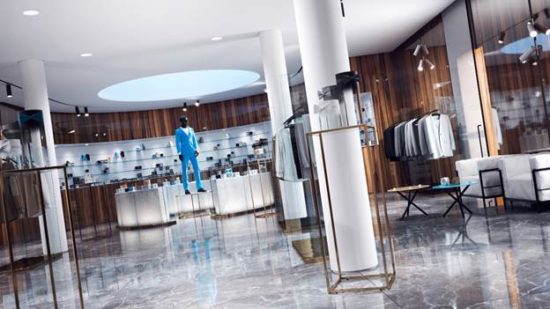V-Ray Next comes for SketchUp.
Several companies offer a ray tracing plug-in for SketchUp, but Trimble calls this one the “premier renderer for SketchUp.” After more than four years of R&D, V-Ray Next accelerates the SketchUp workflow, and according to Chaos Group, the SketchUp plug-in offers massive speed and intelligence enabling designers to produce better renders faster.
Chaos says V-Ray Scene Intelligence can now automatically analyze a 3D scene at the start of a render, optimizing some of the most common decisions an artist will make. For lighting, the company claims its new Adaptive Dome Light (ADL) offers more accurate, image-based environment lighting and claims it’s up to 7× faster. Furthermore, Chaos says ADL is exceptionally fast when working with interiors and removes the need to add Portal Lights at windows and openings.

Finding the perfect camera exposure or white balance can be challenging; however, Chaos says with their new plug-in it’s no longer an issue. Once a scene loads, Auto White Balance and Exposure return the right settings, making the entire process point-and-shoot simple. A new Nvidia AI Denoiser has also been embedded, so users get automatic noise removal and clean updates as they work.
With a claimed 30–50% speed increase and additional increases coming in from the ADL, updated materials and improved GPU rendering, Chaos says V-Ray Next is now the fastest way to produce a photorealistic image from SketchUp. The GPU renderer, says the company, is over 200% faster, accelerating nearly every V-Ray feature including fog and atmospheric effects.
Chaos says they have tightly integrated V-Ray Next into SketchUp to speed up workflows throughout the program. A new Scene Interaction Tool is available that provides direct access to any level of the SketchUp hierarchy, so designers can interactively adjust materials and light properties whenever an object is selected. A new V-Ray Toolbar has also been included, providing new access to top tools and simplified UI controls that will make it easier to set up cameras, adjust render settings and manage scenes.
Additional features include:
- New Lighting Analysis Tools: It’s now easier to visualize a scene’s real-world illumination values in lux or foot-candles.
- New Metalness Material Properties: A new addition to the standard V-Ray Material offers improved compatibility with Substance Designer and PBR materials.
- Color Correction Curves: Fine-tune texture colors right in SketchUp without heading back to an image editor.
- Material ID & MultiMatte Render Elements: Render 2D masks of 3D objects for quick fixes in Photoshop and other image editors.
- Improved V-Ray Scenes and Materials Exchange: Fluid asset transfers from other V-Ray applications (Rhino, Revit, and 3ds Max).
The new asset management system, says the company, will help users find and track V-Ray assets using a custom library that can be shared across SketchUp projects. Any setting change will also now result in a live preview, helping designers experiment with lights, materials and textures, all in one place.
V-Ray Next for SketchUp is available now and is compatible with SketchUp 2016–2019. A full workstation license is priced at $790, with upgrades available for $395. Annual licenses are available as well, for $350 per year. For a free 30-day trial, click here.
What do we think?
In our new Global Ray Tracing Market study, we have identified 15 companies that offer a ray tracing plug-in for SketchUp, five of them are free. As good as V-Ray is, and it is damn good, it is tough to sell against free, and 11 other competitors.
SketchUp has a vibrant plug-in community as a result of its long legacy as a free product but it is getting less free all the time. In our report, we found SketchUp to have 3× plug-ins for it than competing modeling products. But, it’s important to remember SketchUp is different. It’s a powerful tool and over the years it has gained powerful features but it is still primarily a conceptualization tool and is used with other CAD tools to create a buildable/manufacturable model.
SketchUp, formerly Google Sketchup, is a 3D modeling computer program for a wide range of drawing applications such as architectural, interior design, landscape architecture, civil and mechanical engineering, film and video game design.
There’s no longer a downloadable free version. The free version is now hosted on the internet, My.SketchUp, and has been renamed to SketchUp Free. The Make 2017 version will remain downloadable from SketchUp’s website.






